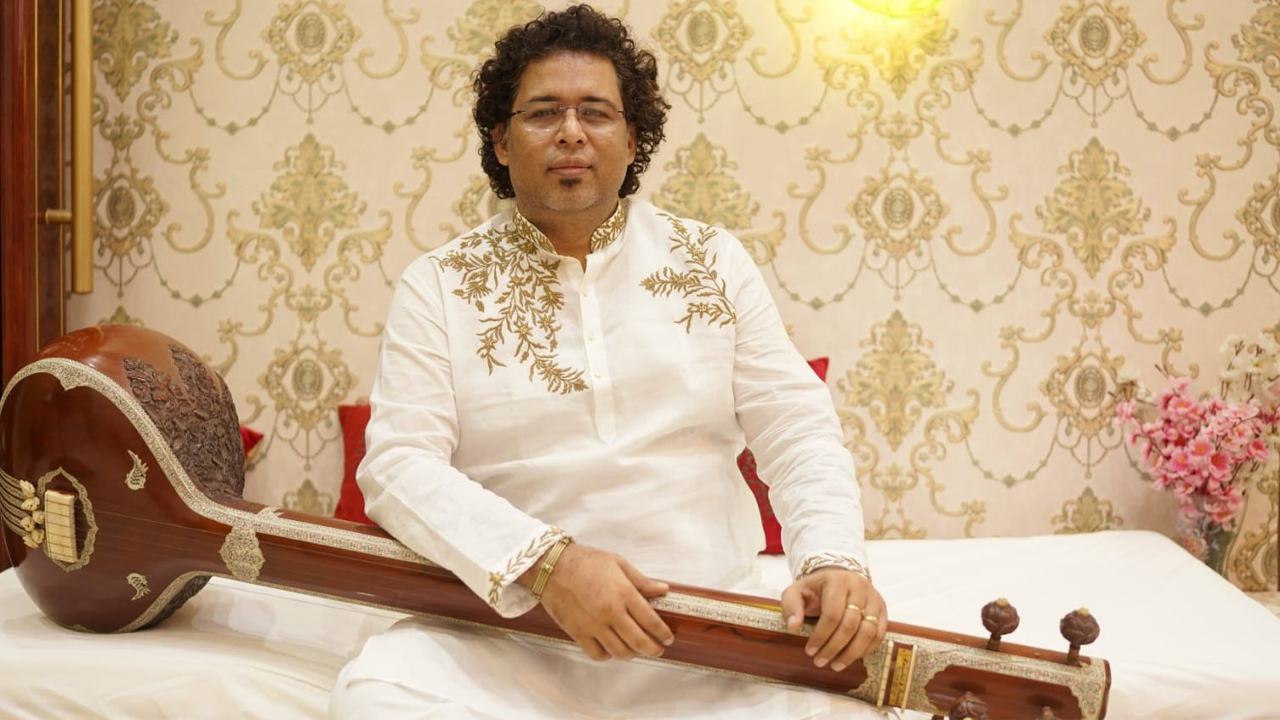
INDIAN CLASSICAL MUSIC AND LIGHT MUSIC/FOLK MUSIC
Classical Indian music is the music of the Indian subcontinent. It has two major traditions: Hindustani, the North Indian classical music, and Carnatic, the South Indian classical music. These traditions were not distinct until about the 15th century. During the Mughal rule of the Indian subcontinent, the practices separated and evolved into distinct forms. Hindustani music emphasizes improvisation and the exploration of every aspect of a raga, while Carnatic performances tend to be short composition-based. However, the two systems continue to have more standard features than differences.
Folk music is considered to be a more traditional form of art. With different styles of music popular all over the world and the evolution of music as an art form, people everywhere have different tastes and styles regarding this form of art.
Tradition is the major distinction between classical music and light music. Classical music has strong roots in its place of origin and is extremely traditional. Light music, on the other hand, is less traditional and has no clear country of origin.
The raga and the tala are two fundamental pieces of Indian classical music. The tala maintains the time cycle, while the raga creates the foundation of a melodic framework. Both raga and tala are flexible frameworks for creation that offer a huge variety of options; but, according to tradition, only a small number of ragas and talas are considered to be fundamental. Raga and tala, or instructions on "division of time," are closely connected, with each unit being referred to as a matra (beat, and duration between beats)
Indian classical music is one of the many forms of art music that have their roots in particular regional cultures. For other "classical" and art music traditions, The author of Brihaddeshi, Matanga muni, wrote a dissertation on the music of the period in the early sixth century. categorized music into two major groups: Marga sangeet: Marga, which is Sanskrit means "path" or "something which leads the way," mostly refers to classical music or ragas.
Desi sangeet is the term for local or folk music, Folk music deals with the human experience, In light music, lyrics are the most important aspect. Every aesthetic decision revolves around what is written in the lyrics
The song's tempo should be easily understood by the general public, and it shouldn't move too slowly or too quickly. That is why Dadra and Keharwa beats are usually chosen for songs. Any music that attempts to deal with both of these subjects, like Thumari for example, is called "light classical" music.
শাস্ত্রীয় ভারতীয় সঙ্গীত হল ভারতীয় উপমহাদেশের সঙ্গীত। এর দুটি প্রধান ঐতিহ্য রয়েছে: হিন্দুস্তানি, উত্তর ভারতীয় শাস্ত্রীয় সঙ্গীত এবং কর্ণাটিক, দক্ষিণ ভারতীয় শাস্ত্রীয় সঙ্গীত। এই ঐতিহ্যগুলি প্রায় 15 শতক পর্যন্ত স্বতন্ত্র ছিল না। ভারতীয় উপমহাদেশের মুঘল শাসনামলে, অনুশীলনগুলি পৃথক হয়ে যায় এবং স্বতন্ত্র আকারে বিকশিত হয়।
হিন্দুস্তানি সঙ্গীত ইম্প্রোভাইজেশন এবং একটি রাগের প্রতিটি দিক অন্বেষণের উপর জোর দেয়, যখন কর্নাটিক পরিবেশনাগুলি সংক্ষিপ্ত রচনা-ভিত্তিক হতে থাকে। যাইহোক, দুটি সিস্টেমে পার্থক্যের চেয়ে আরও মানক বৈশিষ্ট্য রয়েছে।
লোকসংগীতকে শিল্পের আরও ঐতিহ্যবাহী রূপ বলে মনে করা হয়। সারা বিশ্বে জনপ্রিয় সঙ্গীতের বিভিন্ন শৈলী এবং একটি শিল্প ফর্ম হিসাবে সঙ্গীতের বিবর্তনের সাথে, সর্বত্র মানুষের এই শিল্পের ফর্ম সম্পর্কে বিভিন্ন স্বাদ এবং শৈলী রয়েছে।
শাস্ত্রীয় সঙ্গীত এবং হালকা সঙ্গীতের মধ্যে ঐতিহ্য হল প্রধান পার্থক্য। শাস্ত্রীয় সঙ্গীতের মূল জায়গায় শক্তিশালী শিকড় রয়েছে এবং এটি অত্যন্ত ঐতিহ্যবাহী। অন্যদিকে হালকা সঙ্গীত কম ঐতিহ্যবাহী এবং এর কোন স্পষ্ট দেশ নেই। রাগ এবং তাল ভারতীয় শাস্ত্রীয় সঙ্গীতের দুটি মৌলিক অংশ। তালা সময়চক্র বজায় রাখে, অন্যদিকে রাগ একটি সুরের কাঠামোর ভিত্তি তৈরি করে। রাগ এবং তালা উভয়ই সৃষ্টির জন্য নমনীয় কাঠামো যা বিপুল বৈচিত্র্যের প্রস্তাব দেয়; কিন্তু, ঐতিহ্য অনুসারে, অল্প সংখ্যক রাগ ও তালকে মৌলিক বলে মনে করা হয়।
রাগ এবং তাল, বা "সময়ের বিভাজনের" নির্দেশাবলী ঘনিষ্ঠভাবে সংযুক্ত, প্রতিটি ইউনিটকে একটি মাত্র (বীট, এবং বীটের মধ্যে সময়কাল) হিসাবে উল্লেখ করা হয়েছে। ভারতীয় শাস্ত্রীয় সঙ্গীত শিল্প সঙ্গীতের অনেক রূপের মধ্যে একটি যার মূল বিশেষ আঞ্চলিক সংস্কৃতিতে রয়েছে। অন্যান্য "শাস্ত্রীয়" এবং শিল্প সঙ্গীত ঐতিহ্যের জন্য, বৃহদ্দেশীর রচয়িতা, মাতঙ্গ মুনি, ষষ্ঠ শতাব্দীর প্রথম দিকে সেই সময়ের সঙ্গীতের উপর একটি গবেষণামূলক প্রবন্ধ লিখেছিলেন। সঙ্গীতকে দুটি প্রধান দলে শ্রেণীবদ্ধ করা হয়েছে: মার্গা সঙ্গীত: মার্গা, যা সংস্কৃত মানে "পথ" বা "এমন কিছু যা পথ দেখায়," বেশিরভাগই শাস্ত্রীয় সঙ্গীত বা রাগকে বোঝায়।
দেশি সঙ্গীত হল স্থানীয় বা লোকসঙ্গীতের পরিভাষা, লোকসংগীত মানুষের অভিজ্ঞতা নিয়ে কাজ করে, হালকা সঙ্গীতে গান হল সবচেয়ে গুরুত্বপূর্ণ দিক। প্রতিটি নান্দনিক সিদ্ধান্ত গানের মধ্যে যা লেখা আছে তার চারপাশে আবর্তিত হয় গানের গতি সাধারণ জনগণের দ্বারা সহজেই বোঝা উচিত এবং এটি খুব ধীরে বা খুব দ্রুত সরানো উচিত নয়। এই কারণেই সাধারণত গানের জন্য দাদরা এবং কাহারওয়া তাল বিটগুলি বেছে নেওয়া হয়। যে কোনো সঙ্গীত যে এই উভয় বিষয়ের সাথে মোকাবিলা করার চেষ্টা করে, যেমন ঠুমারির মতো, তাকে "হালকা শাস্ত্রীয়" সঙ্গীত বলা হয়।




